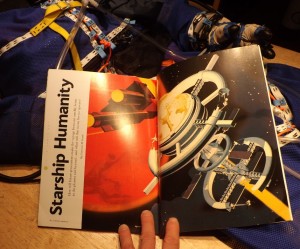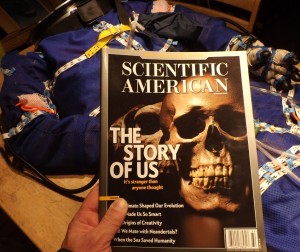Scientific American 2013
Dr. Smith’s article, “Starship Humanity”, originally published in 2013 in Scientific American, is now updated and reprinted in a special issue on human evolution, past, present and future.
Space
Scientific American 308, 38 – 43 (2013)
Published online: 18 December 2012 | doi:10.1038/scientificamerican0113-38
Starship Humanity
Cameron M. Smith
- A space mission that isolates people away from Earth for extremely long periods—for instance, a Mars colony or a multigenerational voyage to a nearby star—will inevitably lead to the evolution of new cultural and physiological traits.
- Long-distance spaceships will be home to unique environmental hazards such as increased radiation and lower ambient pressures. These influences will most severely affect the most fragile stages of life—in the womb and just after birth.
- Mission planners will have to carefully select the “crew” of space travelers. Their goal: a genetically healthy population, but one diverse enough to withstand the occasional pandemic and thrive in profoundly new environments.
To read this article in full you will need to log in or gain access through a site license (see right).

